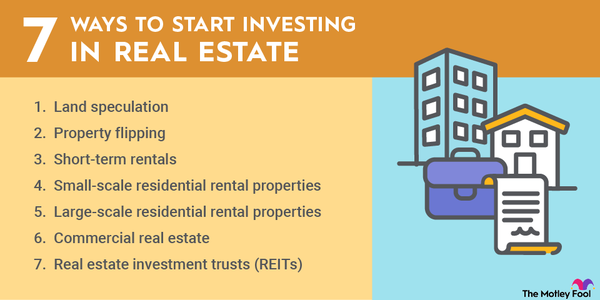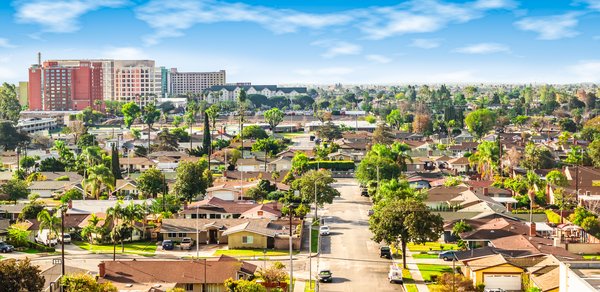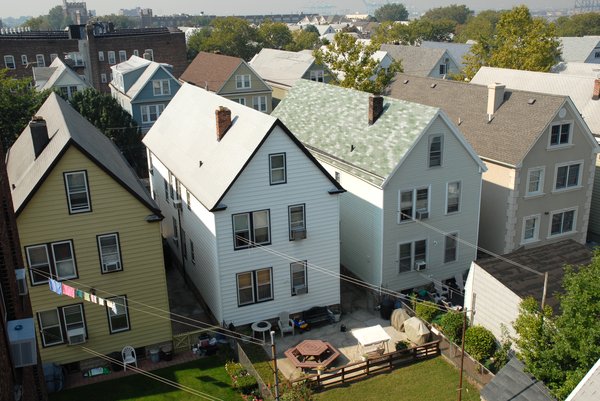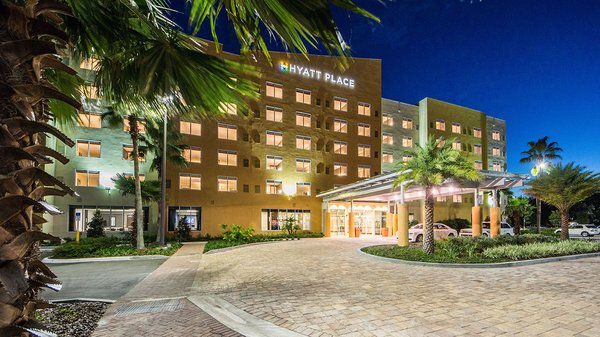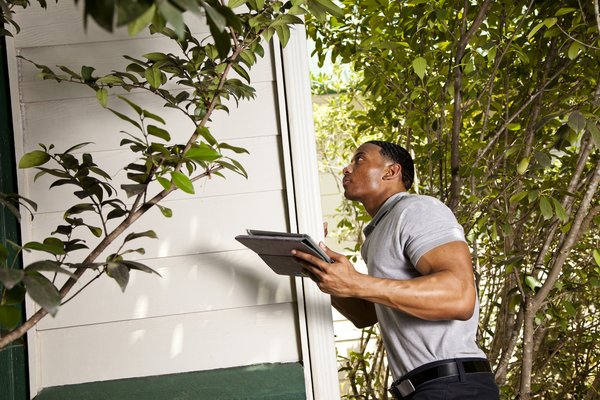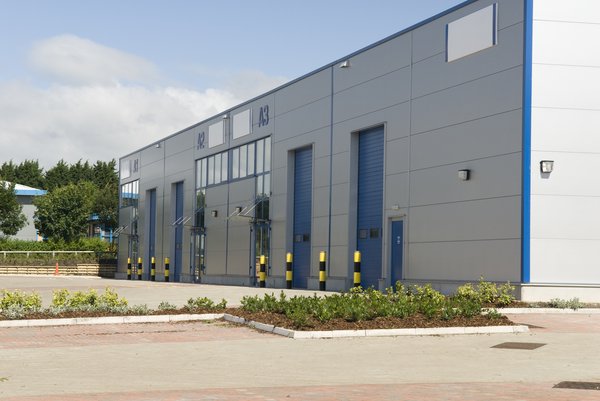A rental property is a real estate asset owned by an investor that is leased out to tenants or businesses, generating rental income for the owner. These properties can be residential (like houses, apartments, and condos) or commercial (like office buildings and retail spaces).
If you are interested in investing in rental property, the process of buying a rental property, how to make a profit with a rental property, different types of rental properties, and more, you’ve come to the right place. Here’s what you need to know.

Is it right for you?
How to decide if rental property investment suits you
Numerous factors can help you decide if a rental property investment suits you and your particular financial situation. First, you need to assess your financial circumstances.
A strong credit score and a manageable debt-to-income ratio are crucial for securing favorable financing. If you want to proceed with investing in rental property, you will need to research the local market in the area in which you want to focus your investment.
- Research neighborhoods with high demand, low vacancy rates, and strong rental income potential.
- Determine if you prefer single-family homes, apartments, or other types of rental properties.
- Evaluate the property's condition, potential maintenance costs, and any necessary upgrades.
- Analyze average rental rates in the area to ensure your property can generate sufficient income.
- Understand current and projected trends in the real estate market, including population growth, employment rates, and economic stability.
- Identify the property tax rates and homeowner association fees in the area.
You should also consider whether you want to focus on short-term gains or long-term appreciation and cash flow. For example, are you comfortable with the potential for fluctuations in rental income and property values? Evaluate your comfort level with potential losses, recurring or surprise property maintenance, and tenant issues.
Rental Properties
The process of buying a property
The process of buying a property
The process of buying a rental property involves several key steps, including securing financing, identifying and making offers on properties, conducting due diligence, and closing the deal. Determine how much you can afford for a down payment, including closing costs and ongoing expenses. Don’t forget to factor in ongoing expenses like mortgage payments, property taxes, and potential repairs. Half of your gross rental income should be allocated to operating expenses to ensure profitability. As a general rule of thumb, the monthly rent should be at least 2% of the total purchase price.
Understand your borrowing capacity and the types of loans available for investment properties, and be prepared for a larger down payment. Lenders typically require a larger down payment for investment properties than for primary residences (often 20%) and will request tax returns, W-2s, bank statements, and other financial documents to accurately assess your financial situation. Talk to multiple lenders and compare their mortgage interest rates and loan options. As you evaluate potential properties, consider:
- The condition of the property and potential maintenance costs.
- Analyze the cash flow potential, factoring in expenses, including rental income, expenses, and mortgage payments.
- Familiarize yourself with local rental laws, tenant rights, and zoning regulations.
- Decide whether you will manage the property yourself or hire a professional property management company.
- Have a general plan of action for how you will eventually sell or liquidate the property.
An experienced agent can help you find suitable properties and navigate the negotiation process. Consult with an agent who specializes in investment properties and can provide expert guidance and access to off-market deals. Your real estate agent can help you identify the best multiple listing service (MLS) based on the type of property you're looking to buy and the geographic area you're focusing on.
Real estate agents can often provide access to properties that aren't publicly listed, too. Many apartment buildings and some landlords use property management companies to handle rentals, so be sure to check websites for companies in your area so you can ensure you have a clear picture of your real estate inventory options.
Don’t be afraid to negotiate the price and terms of the rental property you want to buy before you work with your lender, realtor, and escrow company to finalize the purchase. Once you pay all closing costs, which can include lenders' fees, attorneys’ fees, and escrow fees, you will officially own the rental property.
Making a profit
Making a profit with rental property
To maximize rental property profitability, you will need to focus on the right location, attracting and retaining good tenants, and optimizing your rental listing.
Location matters
Location is crucial for maximizing rental property profits since it significantly affects rental demand, property value, and overall investment returns. Properties in desirable locations with good schools, amenities, and access to transportation tend to attract more tenants and command higher rental rates.
A prime location can lead to higher property values, both initially and over time, ensuring a solid investment. Well-located properties are less likely to experience prolonged vacancies, as they are in high demand, leading to a more consistent income stream. Desirable areas often attract higher-quality tenants, reducing the risk of issues like damage or non-payment of rent. When assessing a location, consider factors like:
- Proximity to amenities: Schools, shopping centers, restaurants, and public transportation.
- Safety: Low crime rates are essential for attracting tenants and maintaining property value.
- Employment opportunities: Areas with job centers tend to have higher rental demand.
- Future development: Look for areas with planned improvements or developments that could increase the property’s value down the road.
Attracting and retaining quality tenants
Implement a rigorous screening process for tenants, including background checks and credit checks, to minimize the risk of defaults and property damage. Create a compelling listing with high-quality photos, a detailed description, and clear information about the property and neighborhood.
Research local rental rates to ensure your asking price is competitive and attracts potential tenants. Maintain open and honest communication with tenants, addressing their concerns promptly and professionally. Keep the property in good condition to attract and retain tenants and to avoid costly repairs due to neglect.
Ways to maximize rental income
Choosing between long-term and short-term rentals depends on your financial goals, risk tolerance, and lifestyle. Long-term rentals offer steady income and less management, while short-term rentals can yield higher profits but require more work and are subject to market fluctuations. If your property is located in a popular tourist area, consider short-term rentals through online platforms that cater to travelers like Airbnb (ABNB -1.6%).
Provide amenities like laundry facilities, storage space, or parking spots to increase the value of your property and attract more tenants. If you are managing a short-term rental, consider implementing dynamic pricing strategies and adjusting your rent based on market demand and seasonality.
If your property is suitable for work-from-home, highlight features like good internet access and dedicated workspaces. If you have a smaller property or a room to rent, consider renting it out fully furnished to appeal to a wider range of tenants.
Manage expenses and taxes
Create a detailed budget that includes all potential expenses, such as mortgage payments, property taxes, insurance, maintenance, and property management fees. Be sure to take advantage of tax deductions and credits available to landlords, such as mortgage and interest payments, insurance, administrative costs, and depreciation deductions.
If you're unable to manage your rental property yourself, it is worth the expense to choose a reputable property management company that can handle tenant screening, rent collection, and maintenance. Make sure you have adequate insurance coverage for your rental property, including liability insurance and property insurance.
Regularly inspect your properties to identify potential problems early and prevent costly repairs. Retaining good tenants can save you money on advertising, screening, and property damage over the long run.
Types of rental properties
Types of rental properties
Rental properties encompass a wide range of property types and tenants. Each of these types of properties can target varying tenant demographics, such as age, income, family size, occupation, and lifestyle. Not only is it key for you as the property owner to understand your target demographic, but this will better enable you to maximize your rental property investment profits and foresee management challenges before they arise.
These can include both residential and commercial use cases, including:
- Single-family homes: Standalone properties designed for one household.
- Multifamily properties: Buildings containing multiple units, each with separate living spaces (duplexes, triplexes, and fourplexes) or structures with multiple rental units (apartments).
- Condos and townhomes: Units within larger developments, often with shared amenities.
- Vacation rentals: Properties rented out for short-term stays, often to tourists or vacationers.
- Office and industrial spaces: Leased to businesses for office or industrial use.
- Retail buildings: Leased to businesses for retail operations.
- Mixed-use properties: Combined residential and commercial spaces, such as apartment buildings with ground-floor retail.
Each type of rental investment property carries its unique hurdles and considerations for property owners. For example, ideal tenants for single-family homes often include young professionals, families, and those seeking the convenience of a home without the long-term commitment of homeownership. At the same time, these properties require more extensive maintenance compared to apartments, including yards, roofs, and various fixtures, which can be costly and time-consuming. A 100% vacancy when a tenant moves out can also be a financial burden, especially with the mortgage still due.
Consider a different type of rental property: vacation rentals. Guests are typically looking for a temporary stay, whether for a few days, a week, or a month. These guests are often tourists, business travelers, or people visiting family and friends. They value amenities like fully furnished apartments, kitchens, Wi-Fi, and outdoor spaces, as well as experiences like proximity to attractions, restaurants, and activities.
Vacation rentals are susceptible to more wear and tear than long-term rentals, requiring proactive maintenance and prompt repairs. Ensuring efficient and thorough cleaning between guest stays is crucial for maintaining a positive guest experience, as is having a network of trusted cleaning services, maintenance contractors, and other professionals. Navigating local regulations, ensuring guest satisfaction, managing property damage, and maintaining consistent income are all considerations for landlords managing vacation rentals.
Related investing topics
Pros and cons
Pros and cons of rental property investing
As is true with most investments, there are pros and cons to consider. Some benefits of rental property investing include:
- Rental properties provide a consistent source of income through monthly rent payments.
- Real estate values can increase over time, leading to potential capital gains.
- Investors can deduct expenses like mortgage interest, property taxes, and repairs, reducing taxable income.
- Real estate can diversify an investment portfolio, reducing reliance on stocks or bonds.
- Investors can use debt (mortgages) to acquire properties, potentially amplifying returns.
- Real estate values and rental income often rise with inflation, providing a hedge against economic downturns.
- Once a property is rented, the income can be generated with minimal active management.
There are also cons to consider that could give some investors pause:
- Purchasing a property, paying for renovations, and securing a mortgage can be expensive.
- Landlords are responsible for property upkeep, repairs, and tenant issues, which can be time-consuming and costly.
- Properties may be vacant for periods, resulting in lost income, and unexpected expenses can affect cash flow.
- Selling a rental property can take time, making it less liquid than stocks or bonds.
- Landlords face potential legal issues with tenants, property regulations, and environmental concerns.
- Managing a rental property can be time-consuming and requires specialized knowledge.
- Real estate values can fluctuate, and local economic conditions can impact rental income and property value.
Investing in rental properties isn't a one-size-fits-all solution and requires careful consideration. It demands time, effort, and financial resources. Like all investments, it comes with risks, such as tenant issues and unexpected costs. Ensure you have a stable income and can afford the costs associated with owning and managing a rental property.
FAQ
Rental Properties FAQ
How can you buy rental property?
To buy a rental property, you first need to determine how much you can afford to invest, including the down payment, closing costs, and ongoing expenses. Explore mortgage options for investment properties and understand down payment requirements, interest rates, and loan terms. Find a real estate agent experienced in investment properties, a mortgage lender, and potentially a property management company to assist with your rental property investment journey.
Where should you list rental property?
There are many rental platforms where you can list your rental property. These include Zillow (NASDAQ:Z), Realtor.com, Apartments.com, and Craiglist.
How do you calculate depreciation on rental property?
Rental property depreciation involves deducting the cost of buying and/or improving real property that you rent so you can spread those costs across the life cycle of your ownership of that specific property. You have to divide the cost basis and value of your property by its recovery period to calculate your annual depreciation total.
Depreciation of rental property starts when the property is placed in service. The federal government allows you to claim the depreciation of the property every year for 27.5 years. You are allowed to deduct the depreciation on your tax return over a longer period if you own a rental property for more than a year that you use for business or farming.
Does owning rental property affect Social Security benefits?
Social Security benefits are primarily based on your work history and earnings, not on your assets or income from sources like rental property.
How do you calculate ROI on rental property?
To calculate the return on investment (ROI) for an investment property, use the formula: ROI = (Net Income + Appreciation) / Total Investment.
To obtain that net income figure, you need to take your annual rental income and subtract your annual operating costs (expenses like mortgage payments, property taxes, insurance, property management fees, utilities, and repairs). Next, add the net income to the estimated value of your property’s appreciation over a given year. Finally, divide that figure by your total investment (purchase price and closing costs).
For example, suppose that your net income on a rental property is $20,000 after you subtract all expenses, your expected annual appreciation is $5,000, and the total investment in the property is $150,000. You would take $25,000 and divide it by $150,000, giving you roughly 0.16 or approximately 16% in ROI.
This is a general formula. Actual ROI can vary depending on whether you purchased the property with cash or financed it, and the types of financing terms you agreed to.
What is a good cap rate for rental property?
A capitalization rate is a metric used to assess the potential return on an investment property, calculated by dividing the property's net operating income by its current market value. It's a simple way to compare the profitability of different properties, regardless of their size or location. A good cap rate for a rental property generally falls between 5% and 10%, but it depends on various factors, including the market, property type, and investor risk tolerance.









